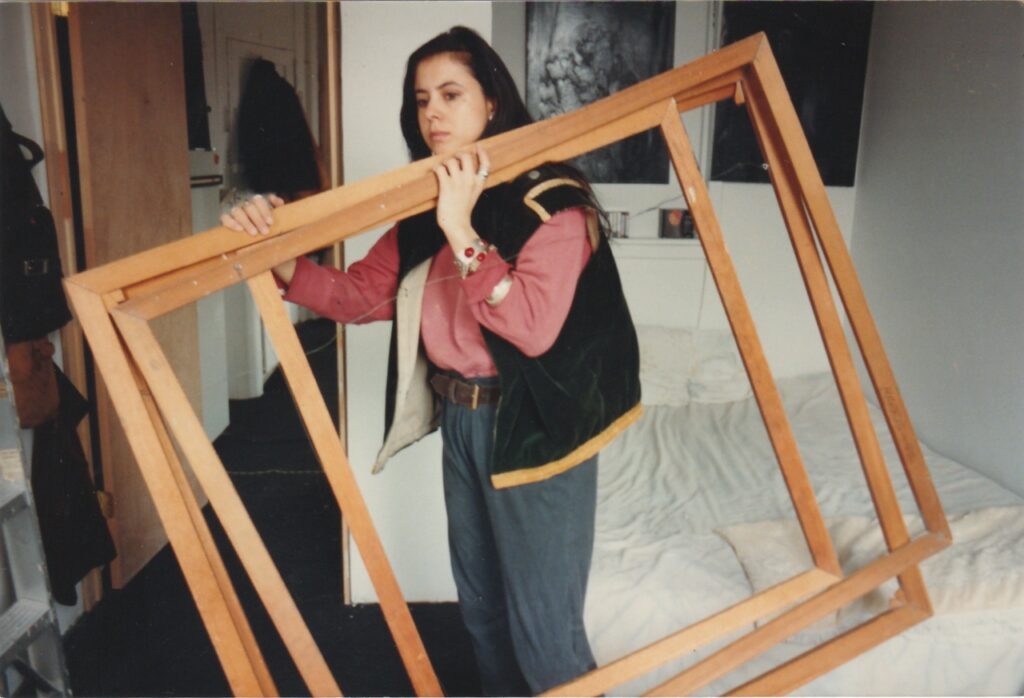
Seconda parte dell’intervista a Leemour Pelli
by/di Pamela Goldman (traduzione in italiano al fondo pagina)
Has something healed or shifted within you as a result of these artistic explorations?
Leemour Pelli: «Art does have the ability to let you process certain emotions, and traumas. It can be used as a coping mechanism that can heal you in the sense that you can confront things that have impacted you, or that you are obsessed with, and that you want to explore. Art does have the ability to heal both an individual, as well as a collective humanity. By rendering certain situations artistically, one can educate someone and involve them in something they may not normally want to be a part of. My personal artistic explorations have taught me to accept things that we have no control over. It has taught me to look deep inside myself and the world, and not to just look at the surface of things».
What do you want the viewer to understand or access when experiencing your work?
L. P.: «Art can help the viewer see things differently, people, the world, relationships. It can help the viewer get in touch with things one don’t necessarily want to face and confront. It can allow the viewer to be exposed to things otherwise hidden in the subconscious. The viewer can change his/her’s ways of perceiving things by partaking in a visual experience which is then experienced viscerally through the body, the mind, and the heart. This in turn can be transferred onto others».
STATEMENT – COLLECTIVE TRAUMA
Also to bring the piece even more relevant, the idea of the collective trauma we all share in relation to recent events: COVID, TRUMP, Jan. 6th insurrection, …there is definitely a need for some wisdom: maybe you have a word on that?
L. P.: «As art can change the way one sees and thinks so too can uniting through the effects of collective trauma change the way one sees, thinks, and acts, and can help heal a world in crisis. There are many wars. …there are those within us, and those outside of us, that somehow reflect back to our collective insides/heart/soul. There was the pandemic, which brought us all collectively closer to our own mortality, a direct encounter with rampant death, and extreme ‘death anxiety’. This mass sickness and premature confrontation with potential death impacted the entire world, and led us to even more separation, pestilence and divisions. Later on, there was the January 6th insurrection, the war in the Ukraine, the wars in the Middle East, crime, violence, mass shootings, terrorist attacks, rapes, murders, political upheavals, potential for a nuclear crisis or attack, the economic situation, etc… It is when these things effect one human being, that they effect all human beings that have a heart, as collective trauma. These are difficult times – because the world does not seem to be learning from its past. Man is still manifesting a barbaric inhumanity to man, as violence and instability are increasing on many different levels throughout the world. Art can expose these things so that a collective healing may take precedence. The artist calls on the viewer to look into their souls, into their worlds, and the worlds of others, and the depths and true meaning of things. For the artist, Art and human inter-relations both create and destroy. The artist, through the portrayal of reality, can expose a world of unsettling absurdity and inhumanity. At the same time, through the process of a shared emotional reaction, one can acknowledge these atrocities and begin a process of accountability, and then try to repair the destruction – perhaps from within and after from without. The world appears as one complex, angst ridden heart with many clogged arteries. How do we open them up – leaving the heart intact?».
Leemour Pelli’s Perspective on Edvard Munch (1863-1944), an artist who inspired her:
“From my rotting body, flowers shall grow and I am in them and that is eternity” – Edvard Munch
L. P.: «To me these words reference that even though we all must die, and are on a path towards death through life, for the artist, there is also a situation that ‘flowers’, or ‘art’ (basically life to Munch), can grow and be created from this madness. It is through this process – of creating, by exploring the rotting body, or the human condition, and the limitations of life and the body, that the flowers of life so to speak – namely art – can achieve some kind of ‘eternity’, contradictory permanence and some kind of meaning. Since art can be eternal, it is a way for the artist to become eternal through one’s art. This is more likely to happen, of course, if you happen to be a male artist – who has achieved some kind of historical recognition. Like Munch, I too feel that I am my art, that I am a part of my paintings. We are inseparable. In some of my work I explore these themes of the artist. Artist Fading I and II, Artist’s Lungs Fading I and II, Clinging for Dear Life and Untitled (Fate)».
“Death is pitch-dark, but colors are light. To be a painter, one must work with rays of light” – Edvard Munch
L. P.: «To me, in this statement which begins with the word ‘Death’, Munch connects life and death, art and life, and art and death. To him, darkness and light/color are inseparable, even though he says that one must work with light. As he expresses Death and light/colors in the same sentence so is his art simultaneously infused with all of these elements. My work is also an amalgam of light and dark, death and life, art and life, and art and death. It is of things coming together and disintegrating, falling apart, being in and out of control, and disappearing and fading away. My work is about the emotions of life, the tumultuousness and unpredictability of life, the soul, and the instability of life in general. My work, like Munch’s is about the inner emotions, and how to portray them. It is also concerned with perceptions and our limitations of surface perception».
“Illness, madness and death were the black angels that watched over my cradle and have since followed me through life” – Munch
L. P.: «Munch is known to have said that these bleak things in life actually enabled his art. For me, in comparison, Romantic melancholy, heartbreak and sorrow, were my ‘black angels’. They accompanied me throughout my childhood and adolescence and several decades after that. They became the colors of my art work».
“I will paint living people who breathe and feel and suffer and love. A work of art can only come from the interior of man. Art is the form of the image formed upon the nerves, heart, brain and eye of man” – Munch
L. P.: «While at times my subject matter may be similar to Munch’s, I take things a step further by painting figures from the inside out. It is as if I try to x-ray them. To see beyond their surface. Some of the paintings are at times – almost like medical charts or surgical procedures, where I study, expose and try to diagnose things. They are poetic in their style. I find that life and human kind are like a heart echocardiogram. They go up and down and the emotions involved are not constant. The way one sees is also dependent upon one’s emotional state of mind. This is why a motif can be looked at in so many ways, and this is what makes art so multi-layered».
The first part of the interview: https://www.inthenet.eu/2023/05/05/leemour-pelli-body-and-soul-investigations-of-the-human-spirit/
This exhibit was compiled by Pamela Goldman, Curator and Founder of Museum Mile Contemporary, a non-profit institution.
To send a message to the artist or the administration click the link: https://www.museummilecontemporary.org/
The artist’s web-site: https://www.leemourpelli.com/
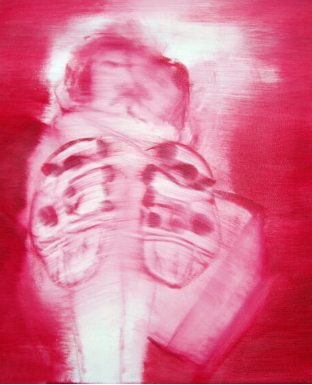
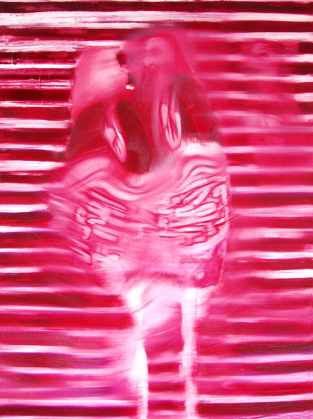
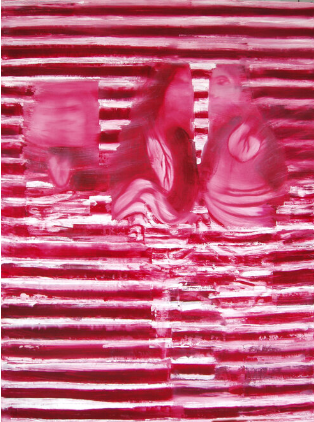
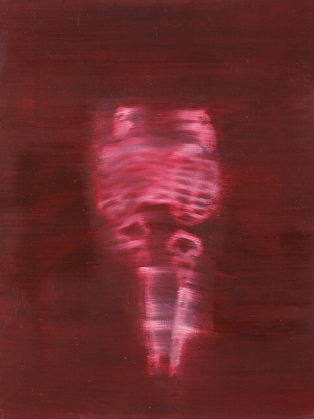
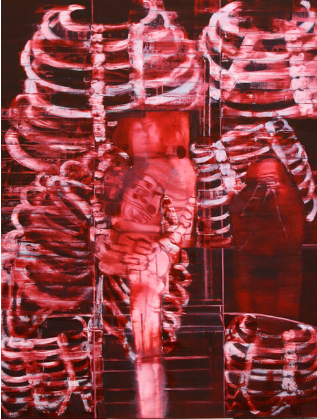
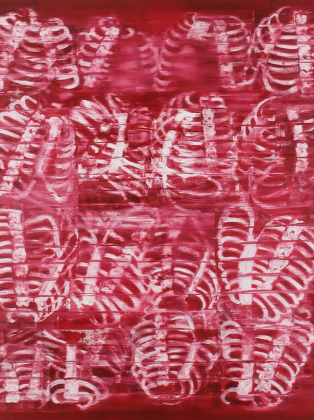
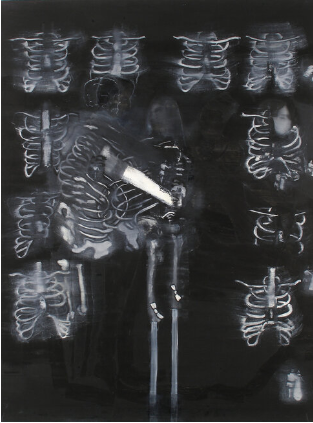
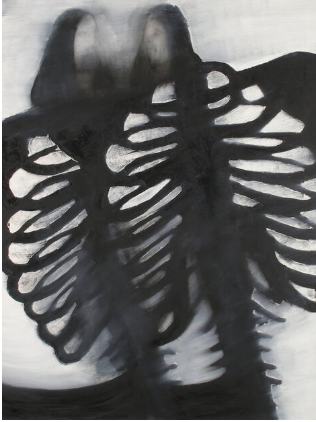
Traduzione in italiano
di Simona Maria Frigerio
Qualcosa è guarito o è mutato in lei grazie a queste esplorazioni artistiche?
Leemour Pelli: «L’arte non ha la capacità di permetterti di processare certe emozioni, e traumi. Può essere utilizzata come meccanismo di difesa, può curare nel senso che ti mette a confronto con cose che hanno avuto un impatto su di te, dalle quali sei ossessionata, e che vuoi esplorare. L’arte non è in grado di guarire né un individuo, né l’umanità nel suo complesso. Rendendo alcune situazioni in maniera artistica, si può educare qualcuno e coinvolgere altri in qualcosa in cui non vorrebbero normalmente partecipare. Le mie esplorazioni artistiche mi hanno insegnato ad accettare le cose che non possiamo controllare. Mi hanno insegnato a guardarmi dentro e a guardare il mondo in profondità, non fermandomi alla superficie».
Cosa vorrebbe che lo spettatore comprendesse sperimentando il suo lavoro?
L. P.: «L’arte può aiutare a vedere le cose in maniera differente, le persone, il mondo, le relazioni. Può aiutare lo spettatore a entrare in contatto con cose che normalmente non vorrebbe vedere o con le quali non intende confrontarsi. Può permettergli di essere esposto a cose che, altrimenti, rimarrebbero nascoste nel suo subconscio. Lo spettatore può cambiare il suo modo di percepire le cose condividendo un’esperienza visuale sperimentata a livello viscerale, attraverso il corpo, la mente, e il cuore. E questo, a sua volta, può essere trasferito ad altri».
DICHIARAZIONE – TRAUMA COLLETTIVO
Per rendere l’opera ancora più rilevante vi è l’idea del trauma collettivo che stiamo condividendo, in relazione a eventi recenti: COVID, TRUMP, l’insurrezione del 6 gennaio (1), …c’è bisogno di saggezza: può dire qualcosa al riguardo?
L. P.: «Dato che l’arte può cambiare il modo in cui si vedono le cose e si pensa, anche gli effetti di un trauma collettivo possono mutare il modo in cui le persone vedono, pensano, e agiscono, e possono aiutare a curare un mondo in crisi. Ci sono molte guerre. …quelle dentro di noi, e quelle al di fuori, che in qualche modo si riflettono nei nostri intimo/cuore/anima collettivi. C’è stata la pandemia, che ci ha portati collettivamente più vicini al senso della nostra mortalità, un incontro diretto con la morte dilagante, e a un’estrema ‘ansietà di morte’. L’epidemia e il confronto prematuro con la morte potenziale hanno impattato l’intero mondo, e ci hanno condotto a maggiore separazione, pestilenza e divisioni. Poi abbiamo avuto l’insurrezione del 6 gennaio, la guerra in Ucraina, le guerre in Medio Oriente, crimine, violenza, omicidi di massa, attacchi terroristici, stupri, assassinii, sconvolgimenti politici, crisi o potenziali attacchi nucleari, la situazione economica, etc… Accade che queste cose abbiano effetti sull’essere umano, sull’umanità in generale che possiede un cuore, e si ha un trauma collettivo. Sono tempi difficili – perché il mondo non sembra aver imparato la lezione del passato. L’uomo manifesta tuttora una inumanità barbarica, mentre violenza e instabilità crescono a differenti livelli in tutto il mondo. L’arte può esporre le cose così che vi sia una guarigione collettiva. L’artista chiede allo spettatore di guardare nella propria anima, nel proprio mondo, e in quello di altri, e nelle profondità e nel vero significato delle cose. Per l’artista, l’arte e le relazioni umane possono entrambe creare e distruggere. L’artista, attraverso il ritratto dell’umanità, può mostrare un mondo di assurdità destabilizzanti e inumane. Allo stesso tempo, attraverso il processo di una reazione emozionale condivisa, l’individuo può ammettere tali atrocità e iniziare un processo di responsabilizzazione, così da porre rimedio alla distruzione – forse prima dall’interno e poi dall’esterno. Il mondo appare come un unico complesso, l’angoscia guida il cuore attraverso arterie ostruite. Come possiamo liberarle – conservando il cuore intatto?».
La prospettiva di Leemour Pelli su Edvard Munch (1863-1944), un artista sua fonte di ispirazione:
“Dal mio corpo in decomposizione, fiori cresceranno e io sarò in essi e quella è l’eternità” – Edvard Munch
L. P.: «Per me tali parole si riferiscono al fatto che, sebbene si debba morire, e camminiamo su un sentiero diretto alla morte per l’intera vita, per l’artista esiste altresì il fatto che i ‘fiori’, o l’‘arte’ (basicamente la vita per Munch), possono crescere ed essere creati da questa pazzia. Attraverso questo processo di creare – esplorando il corpo in decomposizione, o le condizioni umane, e i limiti della vita e del corpo – i fiori della vita, per così dire (traduciamo in arte) raggiungono una sorte di ‘eternità’, permanenza contraddittoria e qualche sorta di significato. Dato che l’arte può essere eterna, la via per l’artista di eternizzarsi è attraverso l’arte. È, naturalmente, più facile che ciò accada se si è artisti uomini – in quanto si è già ricevuto un qualche riconoscimento storico. Come Munch, io penso di essere la mia arte, parte dei miei dipinti. Siamo inseparabili. In alcune tra le mie opere esploro tali temi come artista. Artist Fading I e II, Artist’s Lungs Fading I e II, Clinging for Dear Life e Untitled (Fate)».
“Morte è buio pesto, ma i colori sono luce. Per essere un pittore, si deve lavorare con i raggi di luce” – Edvard Munch
L. P.: «Per me, in questa dichiarazione, che inizia con la parola ‘Morte’, Munch unisce vita e morte, arte e vita, e arte e morte. Per lui, l’oscurità e la luce/colore sono inseparabili, sebbene dica che occorre lavorare con la luce. Come parla di Morte e di luce/colori nella stessa frase, così la sua arte è simultaneamente infusa di tutti questi elementi. Anche il mio lavoro è un amalgama di luce e buio, morte e vita, arte e vita, e arte e morte. Ha a che vedere con cose che entrano in contatto e si disintegrano, si separano, sono e non sono sotto controllo, scompaiono e finiscono. Le mie opere riguardano le emozioni della vita, il tumulto e l’imprevedibilità della vita, l’anima, e l’instabilità della vita in generale. Il mio lavoro, come quello di Munch si concentra sulle emozioni più intime, e cerca di rappresentarle. Ma altresì sulle percezioni e i limiti delle percezioni superficiali».
“Malattia, pazzia e morte erano gli angeli oscuri che vegliavano sulla mia culla e mi hanno inseguito per l’intera esistenza” – Munch
L. P.: «Munch è noto per aver detto che questa tetraggini della vita hanno, in realtà, permesso alla sua arte di esistere. Nel confronto, la melancolia romantica, un cuore spezzato e il rimpianto sono stati i miei ‘angeli oscuri’. Mi hanno accompagnata attraverso la mia infanzia e adolescenza e per decenni. Sono diventati i colori della mia opera artistica».
“Dipingerò persone viventi che respirano e sentono e soffrono e amano. Un’opera d’arte può nascere solamente nell’intimo di un essere umano. L’arte è una forma di immagine che si costruisce sui nervi, il cuore, il cervello e l’occhio umano” – Munch
L. P.: «Mentre a volte il soggetto delle mie opere può essere simile a quello di Munch, faccio un passo oltre quando dipingo figure da dentro a fuori (o al rovescio). Come se facessi loro dei raggi-x. Per vederle al di sotto della superficie. Alcuni quadri, a volte, sono come grafici medici o procedure chirurgiche, sui quali studio, espongo e tento una diagnosi delle cose. Sono poetici nello stile. Trovo che l’umanità e la vita sono come un ecocardiogramma cardiaco. Vanno su e giù e le emozioni coinvolte non sono costanti. Il modo in cui una persona vede, dipende dallo stato emozionale di ciascuno. Questa è la ragione per cui un motivo può essere interpretato in così tanti modi, e questo è ciò che rende l’arte tanto stratificata».
La prima parte dell’intervista su: https://www.inthenet.eu/2023/05/05/leemour-pelli-body-and-soul-investigations-of-the-human-spirit/
Mostra virtuale a cura di Pamela Goldman, Curatore e Fondatore del Museum Mile Contemporary, istituzione no-profit.
Per inviare un messaggio all’artista o all’amministratore del sito, cliccare: https://www.museummilecontemporary.org/
Il sito dell’artista: https://www.leemourpelli.com/
(1) Si intende il cosiddetto assalto al Campidoglio avvenuto il 6 gennaio 2021 da parte di sostenitori dell’ex Presidente, Donald Trump
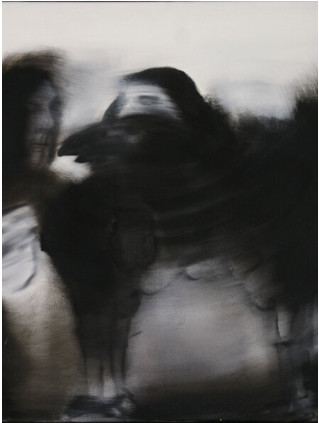
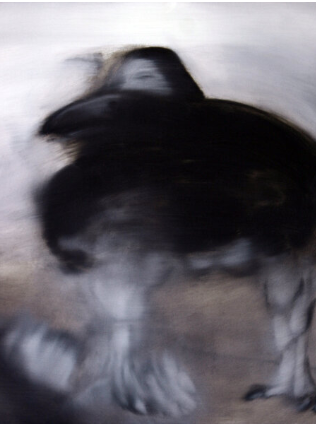
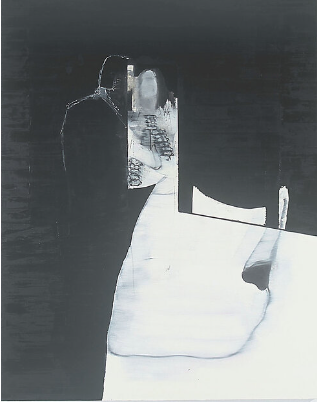
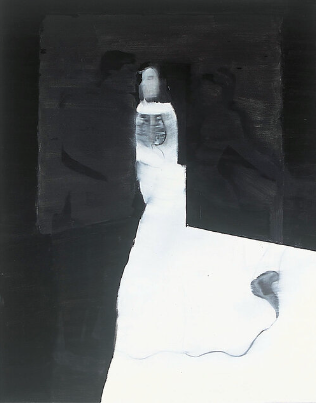
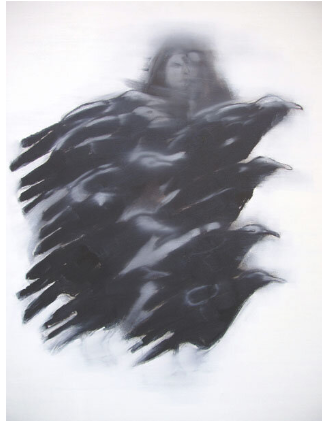
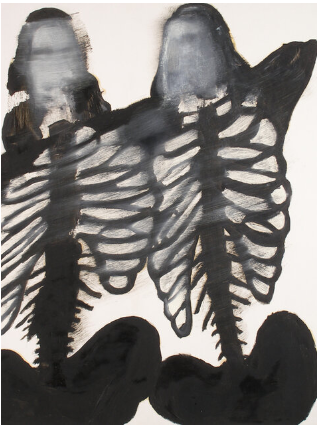
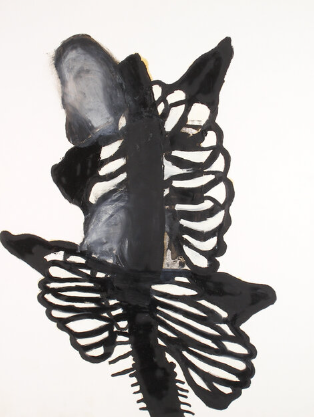
Friday, May 12, 2023 / venerdì, 12 maggio 2023
On the cover: a portrait of the artist; in the article: all images, courtesy by the artist ©Leemour Pelli (all rights reserved. Reproduction prohibited) / In copertina: un ritratto dell’artista; nell’articolo: tutte le immagini, courtesy l’artista ©Leemour Pelli (tutti i diritti riservati. Vietata la riproduzione)







